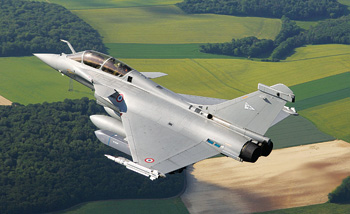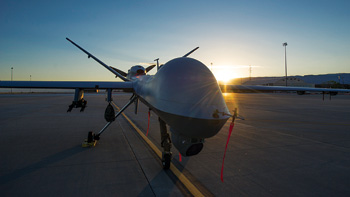INDIAN ARMED FORCES CHIEFS ON
OUR RELENTLESS AND FOCUSED PUBLISHING EFFORTS

SP Guide Publications puts forth a well compiled articulation of issues, pursuits and accomplishments of the Indian Army, over the years

I am confident that SP Guide Publications would continue to inform, inspire and influence.

My compliments to SP Guide Publications for informative and credible reportage on contemporary aerospace issues over the past six decades.
- Prime Minister witnesses 'Bharat Shakti' – a Tri-Services Firing and Manoeuvre Exercise in Pokhran, Rajasthan
- Interim Defence Budget 2024-25 — An Analysis
- Union Defence budget 2024
- Prime Minister Modi Commemorates Indian Navy Day in a Grand Ceremony
- Prime Minister Modi Flies in the LCA Tejas
- New Chapter in India-Italy Defence Ties
- Airpower beyond Boundaries
DPP 2016 — Policy aiming to build defence industrial base in India
If we have to lower the cost of defence procurement while ensuring that competitiveness of our weapon systems is cutting edge, our procurement process has to go many levels below than merely buying latest weapons on the block with hope of subsequent piecemeal indigenisation


In December 1941, when Japanese aircraft and naval ships launched a surprise morning attack on the American naval base at Pearl Harbor, Hawaii, the US economy was still battling the aftermath of 1929 economic depression. In less than 18 months, US economy, launched forth an unprecedented manufacturing machine which produced an endless array of tanks, destroyers, aircrafts and rifles which saw the end of Axis powers and the European dominated world order. This unleashing of enterprise not only ended great economic depression, but paved the way for rise of the United States as a superpower. It must be noted that the men and the entities which led this change were automobile and auto ancillary companies. The US automotive industry had internalised Henry Ford’s assembly line manufacturing and could now apply this to making of tanks, jeeps and aircraft. It rapidly channelised precious commodities like steel and expertise such as welding from auto manufacturing to defence production. Subsequently, some of the biggest behemoths of defence manufacturing in world today from Boeing, Lockheed to General Dynamics leveraged this base to emerge as the biggest weapon system suppliers of the world.
Although it’s naive to suggest that India will have to initiate a war of a proportion of World War II to revitalise its defence manufacturing sector, there are important lessons to be drawn from studying the origins of defence manufacturing in the United States. The Defence Procurement Procedure (DPP) 2016 is a bold attempt in leveraging India’s public and private sector capacities towards creating a robust defence manufacturing ecosystem.
The much awaited DPP 2016 was announced by Defence Minister on March 28, 2016, during inaugural of 9th Defexpo 2016. DPP 2016 as expected has focused towards self-reliance with the same being emphasised in the preamble. This is most important as in past we have witnessed despite a well thought out Defence Production Policy (DPrP 2011) in force, no official has ever bothered to refer it while making capital procurement. Indian industry bodies in their representation to the ministry have always emphasised on the DPrP 2011 which clearly spelt out the need of self-reliance and greater indigenisation. The same was reiterated to the Experts Committee formulated for the review and revision of DPP 2013.

Indian strategic community over the last decade has time and again deliberated on the need of strong defence industrial base in country. This was further necessitated with the successful conduct of Operation Shakti (Pokhran II) as a consequence of which India faced global sanctions and technology denials. It was the Defence Research and Development Organisation (DRDO) and combination of defence public sector undertakings (DPSUs), Ordnance Factories Board (OFB’s) and handful of private sector companies who took the challenge of indigenous development of technology and products to meet the strategic requirements and safeguarding of the Indian frontiers. The Ministry of Defence (MoD) while formulating DPP 2016 has kept the vulnerability of ‘over-dependence and related risks’ while formulating the DPP 2016. The new policy, in order to give filip to defence production, has thus preferred to first procure indigenously designed and developed products from the Indian entities which have the product manufacturing capacity. This preferred category is called ‘Buy (Indian–IDDM)’ where IDDM stands for Indigenously Designed, Developed and Manufactured. Under this new and first preference category, Indian vendor needs to ensure products that have been indigenously designed, developed and manufactured has a minimum of 40 per cent indigenous content (IC) on cost basis of the total contract value; OR, products having 60 per cent IC on cost basis of the total contract value, which may not have been designed and developed indigenously. Apart from overall IC as detailed above, the same percentage of IC will also be required in (a) Basic Cost of Equipment; (b) Cost of Manufacturers’ Recommended List of Spares (MRLS); and (c) Cost of Special Maintenance Tools (SMT) and Special Test Equipment (STE), taken together at all stages, including FET stage.
It shows the commitment of the government to support those companies which are serious in R&Dled innovation aimed at indigenous development of products, rather than those companies which simply buy a substantial portion of foreign technology or products with development of some less technologically complex subsystems or parts as a lateral value addition. This particular category will enthuse companies to invest in R&D, innovate, develop and harness skills and develop niche products for meeting domestic requirements. With this Indian manufacturing will not just march towards self-reliance, saving precious foreign exchange but will enable spinning of new lines of hitherto unexplored product branches which would be useful for defence and commercial usage. With the stabilisation and maturity of products developed under IDDM category, we can eye defence export markets especially of Asian, African and South American economies.

DPP 2016 does mention a competency mapping of private industry following the request for information (RFI), and the relevant SHQs to guide various vendors to commercially off the shelf components (COTS). The problem is this competency mapping would provide a very incomplete picture of India’s true manufacturing potential. It is unlikely MoD will have the bandwidth to truly gauge the expertise of smaller manufacturing ancillaries and manner in which it would dovetail into a larger weapon system. MoD needs to realise that a rigid top-down manufacturing as has been followed till date severely limits the participation of large spectrum of Indian industries, with a bulk of defence contracting being cornered by bigger private sector players. In order to create a resilient vendor base, and spur R&D in defence manufacturing it is imperative that smaller players, even technology startups which are in a position to contribute to systems such as night vision, optics, imagery, and personnel protection & tracking, sensor packages, etc., which are critical for ensuring battlefield competency in a complex theatre be integrated into the manufacturing process. It is incumbent on the MoD to realise that the only way to encourage a wider private sector R&D participation is to ensure identification and dissemination of technologies which are necessarily dual use in nature. The Predator drone, which has given the United States the first truly global strike capability, was not developed by any of the big defence players such as Boeing or Lockheed Martin. It was the work of Abraham Karem on a seed budget of $5 million and time frame of only three months1. The modern Predator drone which has revolutionised the battle space bringing in unprecedented intelligence surveillance and reconnaissance (ISR) and strike capabilities is powered by an ancient 110 hp four-stroke petrol engine more likely to be found in a golf cart than cutting-edge military hardware. Its long loiter times and low fuel consumption proved to be a critical battlefield advantage.
We must also realise in the global era we need to utilise our strategic equations with various countries for technological collaborations and partnership for the development of products tailor made for needs of the Indian warfighter. This has to be a combination of indigenously designed and developed products adequately complimented by global solutions. With this approach of partnership, Indian industry can very well become part of global supply chain, which itself will ensure that ingeniously developed defence and aerospace products get recognition in global defence market.
The government has realised the importance of involvement of industry as partner in the planning process. Without the closer synergy between the industry and users, the gaps between the user requirement and the delivery capability of industry will always remain a challenge and there will always be enough reasons for lack of satisfaction of both sides. DPP 2016 has mentioned that industry may be involved at the feasibility stage itself (draft PSQR may be shared) by HQ IDS/SHQs. Extensive interactions with industry will augment Indian industry’s capability to design, availability of technology/Indian product will not just help users but also help Indian industry to understand the thought process, operational requirement thus leading to investment in required technology and future research for innovations. The sources while drafting of SQR should also include careful understanding of those battlefield scenarios in the world which mirror Indian tactical situations. The analysis and qualification requirement shouldn’t be limited to a few defence publications which might bias the SHQ/HQ IDS to offerings of a few defence manufacturing incumbents.
Closer Industry Involvement is a sign of mutual trust and confidence on capacity and capability to deliver. The other major welcome in DPP 2016 which will help Indian defence industry is the relaxation for transfer of technology (ToT) to private entity under ‘Buy (Global)’ cases. Single vendor selection based on abinitio development/MoU with foreign partner extended to private industry also permitted. All these measures will bring level playing between the public and private sector.
Though, DPP 2016 like previous publications is overly enthusiastic about ToT, evidence suggests that such a transfer which of necessity also includes intellectul property rights and patents rarely happens. Even more so, defence technology transfer in many cases violates laws such as MTCR. If we examine the history, of previous efforts at ToT by Indian Government, the foreign entities have only come as far as allowing licensed production of equipment. Even the much publicised purchase of 36 Rafale jets does not include transfer of critical technologies such as AESA2. India needs to understand that being a mere market for defence equipment is not a strong enough incentive for major defence manufacturers of the world to agree to a technology transfer which they have developed and patented after expending billions in both man-hours and dollars.
The only real path for a realisable ToT is for India to reach out to smaller players including hardware startups in United States and Israel which are eagerly looking for seed funding and a supportive ecosystem. It is not beyond imagination that India could have provided an office space and $5 million for leading systems (Abraham Karem’s firm) and taken the lead ahead in UAV technology. Pitching Pentagon so late in the day for 40 Predator drones is going to be an enormously complicated not to mention an immensely expensive exercise3. The only way to explore and exploit possibilities which are at a nascent stage is to move away from a top-down thinking as arising from a rigid interpretation of DPP. While extant procedures of DPP such as defence competency mapping and SQR might serve reasonably well when procuring a fighter jet or an aircraft carrier, it falls woefully short when it comes to critical technologies such as stealth drones, bullet proof vests, perimeter surveillance and automatic firearms. The reason being that cutting-edge innovation on these technologies are often done by small startups which often won’t even advertise in defence publications and periodicals. They mostly end up selling their solutions to a larger company which has better mass manufacturing and marketing abilities. If we have to lower the cost of defence procurement while ensuring that competitiveness of our weapon systems is cutting edge, our procurement process has to go many levels below than merely buying latest weapons on the block with hope of subsequent piecemeal indigenisation. The danger with the latter approach is that ‘Make in India’ may just devolve into an ‘Assemble-in-India’ cutting out many high-value/high-wage jobs from India.
The detractors and larger defence manufacturing companies often love to quote the iPhone, stating that a significant share of its subsystems are manufactured in China and South Korea. While factually true, what they often forget is that iPhone is at the end of day an American product with much of the patents and intellectul property rights held by a company in California whose name has almost become a mantra among design gurus. Most importantly the value-addition of iPhone is primarily not so much because of the subsystems involved but its unique tailor-made operating system and a software ecosystem which is designed to squeeze every ounce of power from underlying hardware while maintaining exceptionally high levels of device reliability.
Similarly, it is a foregone conclusion that indigenisation of defence equipment will have to depend on foreign subsystems, but it’s one thing to import critical semiconductors to give your hardware a competitive edge and completely another to import entire sub-assemblies of knocked down products, assemble in India, tweak the output requirements and have our local entities name stamped on it. It is the latter which we need to discourage. The DPP 2016, IDDM 40/60 per cent indigenisation requirements rightfully capture this spirit, but it remains to be seen how it is executed.
Bhaskar Kanungo is working as Deputy Director – Defence and Aerospace, FICCI. The views expressed in this article are his personal and not necessarily the reflection of official FICCI position.
C.S. Krishnadev is an independent nuclear energy and strategic consultant.
1http://www.economist.com/news/technology-quarterly/21567205-abe-karem-created-robotic-plane-transformed-way-modern-warfare
2http://www.financialexpress.com/article/economy/talks-for-36-rafale-jets-far-from-over/236378/
3http://in.reuters.com/article/india-usa-predator-drones-chinapakistan-idINKCN0X51BW





